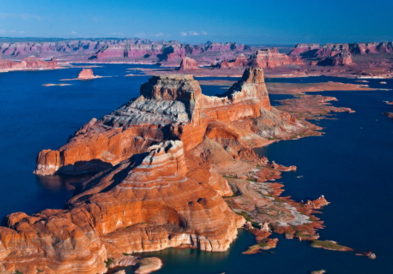Written by Kyle Criddle
For years, Utah’s elected officials have deluded the public into believing the state is running out of water, and for years people like you and me have believed them. In the eyes of the Division of Water Resources, the answer to our water crises is contingent upon the implementation of major water projects which will adversely effect renewable resources, ecological stability and our neighbors downstream.
The division proposed constructing the Lake Powell Pipeline (LPP) which would deliver 26.7 billion gallons of water from Lake Powell to Washington and Kane counties in southwestern Utah. While, at face value, it appears that the proposal could put the issue of water scarcity and years of drought to rest, the validity behind such an imposing project in an age of climate change and rampant corruption is questionable.
Controversy and concern have erupted around the water project since it received legislative approval in 2006. Environmental activists and opponents of the LPP are questioning the logic behind such a monumental decision and whether or not it is necessary. A 2015 audit of Utah’s projected future water needs revealed that data supporting the LPP is both unreliable and highly inaccurate. An estimated $2 billion price tag gives all the more reason for skeptical residents to raise concerns over unreliable data when the idea of draining one of the state’s most alluring recreation areas is unpopular at best. I myself reserve serious doubts regarding the LPP economically, ecologically and socially.
In the face of mounting evidence of the detrimental effects the LPP would have, state officials continually insist the pipeline is necessary for providing future generations with access to water. I am concerned about our elected representative’s blatant disregard for alternative water conservation measures in place of water projects such as this. Our desolate state is the second driest and the highest consumer of water in the nation, where lawns are green and lush, and the water is dirt cheap.
The way I see it, the stark reality of this dilemma is in the overuse and abuse of our water resources that have led us here in the first place. Snowfall and annual precipitation provide an ample supply of water for a population much larger than ours currently. It does not provide for golf courses, or houses with unnaturally green grass and sprinklers running in 90-degree heat. These amenities are not necessary for health or productivity, nor are they sustainable. Although this reveals how lackadaisical our state has become in terms of responsible water use in a semi-arid desert region, we all know it’s probably not going to change any time soon.
Conservation alternatives such as rainwater harvesting (RWH), universal metering, tiered water prices and agricultural water conversion to name a few, are not only viable and ready for implementation but in some cases currently in practice. Local non-governmental organization and environmental activist group, the Utah Rivers Council, announced its RainHarvest program in 2015, selling over 2,300 rain barrels since. This translates into 115,000 gallons of water saved with each decent rainfall. While RWH is not a single solution to ensuring Utah’s water future, it is a prime example of a low cost, yet highly effective technique for quenching our state’s thirst for cheap water. When coordinated with multiple conservation methods, the need for the LPP will surely fade from memory.
With SB 80 — Infrastructure Funding Amendments — passing the State Senate and on its way now to the House of Representatives, where if passed it would provide full funding for the LPP, Utah’s water future is full of uncertainty. The irony of these expensive and environmentally irresponsible water projects is that they would be entirely unnecessary if we practiced reasonable, responsible water conservation. To make matters worse, the project continues onward with relatively little opposition despite the official report from the state auditor indicating this is the worst idea since Donald Trump started wearing that dead Possum on his head.
For those Lake Powell lovers, it may be wise to visit your beloved lake this summer, it could be one of a very few left.


